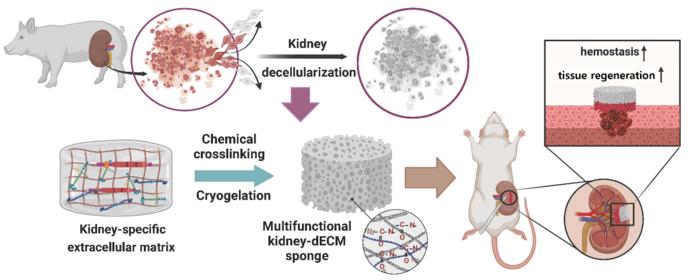Greater pulse consumption in American children is associated with a higher diet quality and improved shortfall nutrient intakes
Moscow, Idaho, July 25, 2024: New research showing the association between greater pulse consumption and significant health related outcomes in American children will be presented during the Society for Nutrition Education and Behavior’s (SNEB) International Conference 2024 in Knoxville, TN. The poster session is scheduled for Tuesday, July 30, 2024, from 4:30 -5:30 PM ET […]

Moscow, Idaho, July 25, 2024: New research showing the association between greater pulse consumption and significant health related outcomes in American children will be presented during the Society for Nutrition Education and Behavior’s (SNEB) International Conference 2024 in Knoxville, TN. The poster session is scheduled for Tuesday, July 30, 2024, from 4:30 -5:30 PM ET at University of Tennessee, Knoxville, Student Union. SNEB, an international organization of professionals actively involved in nutrition education and health promotion, has a vision of healthy communities, food systems, and behaviors.

Credit: The Coalition for the Advancement of Pulses
Moscow, Idaho, July 25, 2024: New research showing the association between greater pulse consumption and significant health related outcomes in American children will be presented during the Society for Nutrition Education and Behavior’s (SNEB) International Conference 2024 in Knoxville, TN. The poster session is scheduled for Tuesday, July 30, 2024, from 4:30 -5:30 PM ET at University of Tennessee, Knoxville, Student Union. SNEB, an international organization of professionals actively involved in nutrition education and health promotion, has a vision of healthy communities, food systems, and behaviors.
Using data from the National Health and Nutrition Examination Survey, 2001-2018, researchers aimed to identify commonly consumed pulse (beans, peas, and lentils) dietary patterns in American children and assess shortfall nutrient intakes and diet quality relative to children whose typical dietary pattern avoids pulses. Results show that greater consumption of pulses is associated with significant greater shortfall nutrient intake relative to the no-pulse dietary pattern. According to the findings, a dietary pattern comprised of approximately 2 servings of pulses daily is associated with significantly higher total diet quality scores compared to the no pulse dietary pattern. Children consuming approximately 2 servings of pulses daily have significantly higher dietary fiber, potassium, and choline intake relative to non-consumers of beans.
“We know that the majority of children are not meeting established recommendations for fruits, vegetables or pulses,” states study author Yanni Papanikolaou, of Nutritional Strategies Inc. “Pulses are excellent sources of fiber, folate and potassium and excellent sources of plant protein that also provides iron and zinc like other protein foods.” The study was funded by Cannedbeans.org on behalf of Bush’s Best and the Coalition for the Advancement of Pulses.
Pulses remain under consumed in the United States, with greater than 80% of the population below recommendations.[i] Research shows that pulses help meet micro-nutrient demands in childhood and should be part of children’s diets once solid foods are introduced.[ii] Dietary patterns rich in beans and pulses (including kidney beans, black beans, pinto beans and/or chickpeas) are associated with significantly higher diet quality scores. Highest diet quality scores are associated with 24% decreased risk of cardiovascular disease, 31% reduced risk for coronary heart disease, 20% lowered risk for stroke, 23% decreased risk for diabetes, and 6% reduced risk for cancer. [iii]
“This research supports the growing body of evidence that consumption of pulses may have numerous nutrient and public health benefits,” said Tim McGreevy, CEO, of USA Pulses. “The Dietary Guidelines for Americans 2020 – 2025 and the USDA’s Choose My Plate indicate that beans, chickpeas, peas, and lentils can be considered as part of the vegetable or protein groups.”
______________________________________________________________________________
Poster Presentation Details
Title: Greater Pulse Consumption in Children is Associated with a Higher Diet Quality and Improved Shortfall Nutrient Intake
Authors: Yanni Papanikolaou, Joanne Slavin, Victor L. Fulgoni, III
Session Date and Time: Tuesday, July 30, 2024, 4:30 – 5:50 PM ET
Location: University of Tennessee, Knoxville, Student Union
All abstracts will be published in the Journal of Nutrition Education and Behavior July 2024 Conference Supplement.
####
ABOUT THE COALITION FOR THE ADVANCEMENT OF PULSES
The Coalition for the Advancement of Pulses (CAP) is an initiative led by the American Pulse Association (APA) with support from the USA Dry Pea and Lentil Council (USADPLC), the U.S. Dry Bean Council (USDBC), and the Pulse Foundation. The CAP coalition represents a collective of pulse crop growers, processors, manufacturers, and related organizations. CAP is committed to increasing the consumption of pulses in the United States by increasing research on the nutritional benefits of pulses and growing awareness about the many health benefits of pulse crops. For more information visit usapulses.org or contact CAP@usapulses.org
ABOUT CANNEDBEANS.ORG
Cannedbeans.org, sponsored by Bush’s Best®, is a category-building marketing campaign aimed at promoting the universal health benefits of canned beans regardless of brand. Containing fiber, protein and iron, canned beans make it easy to add more plants to your diet and help people live longer, healthier lives. For more information, check out the latest tools, recipes, and resources below to learn more about the benefits of canned beans at www.cannedbeans.org.
[i] US Department of Agriculture; U.S. Department of Health and Human Services. Dietary Guidelines for Americans, 2020–2025, 9th ed.; 2020. Available online: https://www.dietaryguidelines.gov/sites/default/files/2020-12/Dietary_Guidelines_for_Americans_2020-2025.pdf (accessed on 4 April 2023).
[ii] Vieira EDF, Gomes AM, Gil AM, Vasconcelos MW. 2021. Pulses’ Benefit in Children’s Diets: A Narrative Review. J Obes Chronic Dis 5(1):13-22.
[iii] M.L. McCullough, D. Feskanich, M.J. Stampfer, E.L. Giovannucci, E.B. Rimm, F.B. Hu, D. Spiegelman, D.J. Hunter, G.A. Colditz, W.C. Willett. Diet quality and major chronic disease risk in men and women: Moving toward improved dietary guidance. Am J Clin Nutr. 76 (2002) 1261-1271.
Method of Research
Data/statistical analysis
Subject of Research
People
COI Statement
The study was funded by Cannedbeans.org on behalf of Bush’s Best and the Coalition for the Advancement of Pulses.
What's Your Reaction?

































